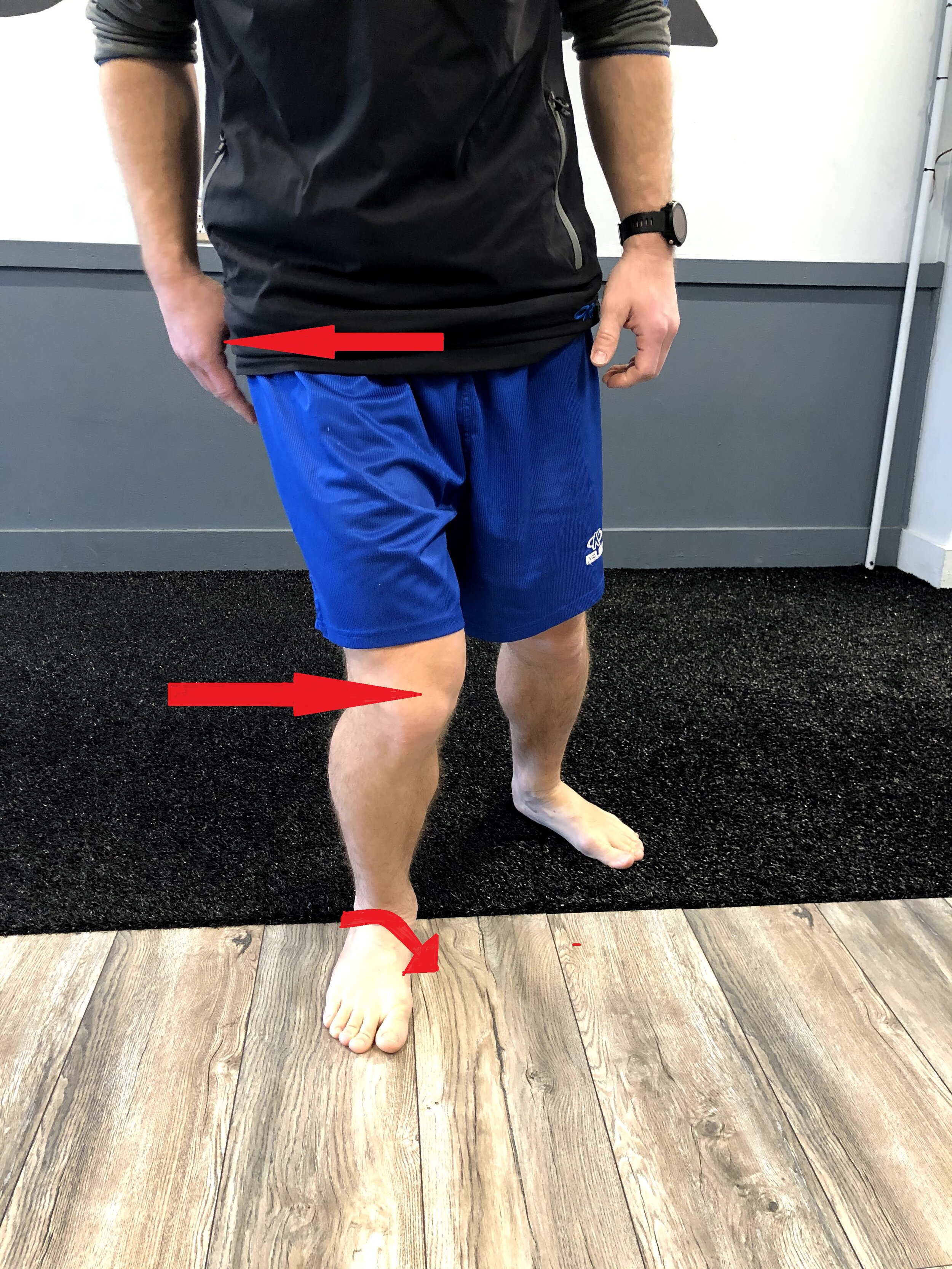Runner's Knee - Knee Pain
Is going down the stairs painful?!
Knee pain is not just a runner’s problem, though it is often referred to as Runner’s Knee. It is experienced by many people who enjoy all sorts of sports such as hiking, climbing, baseball, track and field, lifting, CrossFit , and cycling. Pain in the knee can appear either all at once because of a traumatic injury or direct collision, or gradually increase over time as a result of repeated stress/overuse. This is often diagnosed as Patellofemoral Syndrome.
Runner's Knee is a blanket term hallmarked by pain around, over, or behind the kneecap. You may notice it as a dull ache while you are running, jumping, walking down the stairs, or going into a squat. This pain can also be a bit sharp, especially when aggravated by quick starts and stops or sudden changes in direction.
Patellofemoral Knee Syndrome can onset as a result of an impact (think falling on your knee) or sudden overloading of the tendons and ligaments around the knee. This overloading is often a programming problem. This will happen most often to weekend warriors (I’m right there with you!) but can also happen to athletes that ramp up their training too quickly without an adequate base fitness. Our tissues build with repetition of load. If the tissues are not adequately robust, overloading will cause irritation. We cannot talk about overloading without mentioning under-recovered tissues. If you’re not getting enough rest, recovery, self-care, and sleep, your tissues do not have the ability to build capacity.
Notice, as the knee caves in, the same foot rolls over into hyper-pronation and the hip pops out to the side. Dysfunction in any of these areas may present itself as pain in another joint. therefore the cause requires a diagnosis. Crux can help!
Another common cause of knee irritation is poor mechanics. Using poor form for your sport, especially when repeated and intense, can aggravate the tendons and ligaments. One of the common form faults that we see in the clinic is related to weakness or instability of the muscles in the foot and hip. Normally, external rotators and stabilizers of the hip, like the piriformis and gluteus medius act to keep the hips level and keep the knee in line with the toes. These areas can become weak or unstable, because of either a structural difference or lack of strength. This causes your knee to repeatedly go valgus (or cave in) when you squat or step in a walk or run. This causes a rotational stress on the knee and puts unnecessary strain through the tissues of the knee, eventually causing irritation.
Fortunately, there are several things you can do to avoid Runner's Knee. Step one for avoiding knee pain; move well. Make sure that you are performing your sport or lifts with proper technique to avoid injury. Connecting with a great trainer specific to your sport is the best way to achieve this goal. Of course, you can try to YouTube proper form in your sport, but nothing beats individualized programing and the watchful eye of a trained professional. I liken it to eating at home or getting food from a restaurant. Of course I can make a meal that’s edible, but if I want to eat well, I trust the professionals. Get a coach/trainer and thank me later.
If you are currently dealing with some knee pain, you may consider using either heat or ice for temporary relief and to speed up recovery. If your Runner's Knee is fairly new or comes with excessive swelling, you can use ice to reduce the swelling to the knee. This would also be a good time to rest a bit and allow that swelling to go down. If it’s long-lasting knee pain or comes with little to no swelling, adding some heat may be a good way to improve blood flow and reduce your recovery time. In this case, slow progressive loading is the best bet to get you back on your feet again.
Improving strength and mobility of the muscles of the feet and hips is the next step. Fortunately, strengthening strategies for alleviating your symptoms of Runner's Knee also act as prevention. Common muscles in the hip that may need to be targeted for strengthening are the lateral stabilizers of the hip, like the piriformis and gluteus medius. Other exercises should target the stability of the foot, to make sure the arch is not collapsing and to ensure strength of the muscles of the feet. Your foot is full of an impressive network of muscles that keep you grounded. This is where we connect with the earth and a strong base sets us up for better movement. Knowing where to start often requires a professional’s eye, however, some strengthening exercises will target both areas. Check out the exercise videos below for some examples.
If you can’t manage to shake your Runner's Knee on your own, the Crux Crew has got you covered. Everyone’s pain is unique to their body and experience. Thankfully, we have a cornucopia of strategies to get you back to your daily routine including both diagnostic strategies and treatments. First, we will guide you through a functional movement assessment which will give us insight into potential causes for your pain. Next, we may use manual therapies such as active release therapy (ART), dry needling, various adjustments, and Graston or Instrument Assisted Soft Tissue Manipulation (IASTM). We will continue your care by guiding you through various exercises to progressively load, as mentioned earlier. This process will include perfecting the exercises suggested earlier (videos below) as well as building through progressions to improve strength, control and mobility of the foot, hip and ankle.
If you are looking for help, register for an appointment here, on our website. We look forward to the opportunity to help you get back to your everyday routine, doing the things you love.

